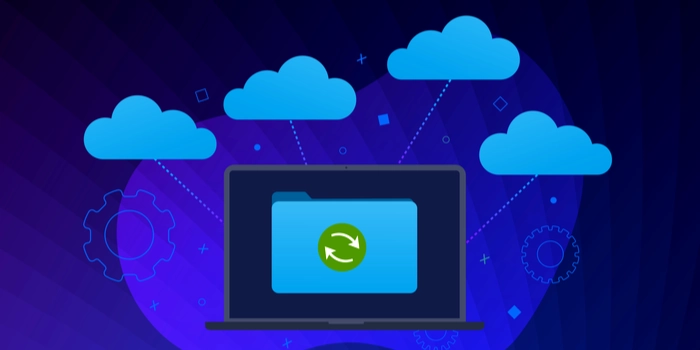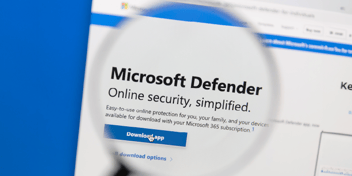Microsoft has an array of solutions to help ensure security and productivity for your business. One of the more popular endpoint solutions is Microsoft Defender, an enterprise security platform designed to help networks detect, prevent, and respond to threats. Other platforms separate domains and look at them in isolation, creating a siloed rather than holistic view of your organization. Microsoft Defender overcomes this challenge by providing a cross-functional view into your business endpoints.
Here's How Your Business can Benefit from Microsoft Defender:
What Is Microsoft Defender?
Microsoft Defender is a threat response solution that functions across your company domains and endpoints, by catching threats before they result in full-blown cyber attacks. Defender analyzes your systems and users, creating patterns of behavior that serve as a benchmark for your network. If behavior deviates from this standard, Defender flags, analyzes, then aggregates the information into specific security incidents. The solution also contextualizes these signals and incidents, so your security team can cut through the noise and understand what exactly is going on in your network. These incidents are reported in a single dashboard, providing a clear view into overall network health and responsiveness.
Within this dashboard, your team can view attack types, the employees who were targeted, specific mailboxes, and endpoint devices. Defender then provides recommendations for remediation that your security team can use. Microsoft 365 Defender is the most recent iteration of the program, merging the best of Microsoft Defender for Endpoint, Microsoft Defender for Office 365, Defender for Identity, and Microsoft Cloud Application Security.
7 Ways Microsoft Defender Protects Your Data
-
Threat & Vulnerability Management - This is a risk-based approach to the prioritization, remediation, and discovery of endpoint misconfiguration and vulnerabilities.
-
Attack Surface Reduction - This is the first line of defense in the Microsoft Defender stack. If the settings are properly set and mitigation techniques are applied, Defender can combat attacks and exploitations. There are web and network protections that regulate malicious IP addresses, URLs, and domains.
-
Next-Generation Protection - Microsoft Defender for Endpoint uses next-generation protection to catch all types of emerging threats. This further reinforces the security perimeter of users' networks.
-
Endpoint Detection & Response - These capabilities are meant to detect, respond to, and investigate threats that may have made it through the first two security layers.
-
Automated Investigation & Remediation - The goal of this solution is to quickly respond to advanced attacks and to help reduce the alert volume in minutes, at scale.
-
Microsoft Threat Experts - This is a new managed threat hunting service that provides prioritization, proactive hunting, and insights that empower Secure Operations Centers to respond and identify threats accurately and quickly.
-
Management & APIs - This allows users to integrate Microsoft Defender for Endpoint into workflows that already exist within your computing environment.
Microsoft Defender Modes
There are three modes in Microsoft Defender. Each responds to threats differently, so it's essential to understand what these modes do to ensure the best security for your system.
-
Active Mode - In this mode, Microsoft Defender Anti-virus is used as the main anti-virus solution on the device. When active mode is turned on, threats are remediated, files are scanned, and threats that are detected are listed in your Windows Security app and your organization's security reports.
-
Passive Mode - In passive mode, Microsoft Defender Anti-virus is not the primary anti-virus solution on the device. Files are still scanned and detected threats are still listed, but threats are not remediated. Microsoft Defender can only run in this mode on endpoints that have been onboarded to Microsoft Defender for Endpoint.
-
Disables or Uninstalled - When this mode is on, Defender is not used. Files are not scanned and threats are not listed. This mode is not recommended.
What Does Microsoft Defender Cover?
-
Applications with Defender for Cloud Apps - This is a cross-SaaS solution that brings enhanced threat protection, strong data controls, and deep visibility into your cloud solutions.
-
Endpoints with Defender for Endpoint - Defender Endpoint is an endpoint platform used for post-breach detection, preventative protection, and response.
-
Identities with Defender and Azure Active Directory Identity Protection - This uses Active Directory Domain Services signals to detect, identify, and investigate advanced threats, malicious insider actions, and compromised identities.
-
Collaboration and Emails with Defender for Office 365 - This safeguards your organizations against malicious threats by links, emails, and collaboration tools.
Microsoft Defender provides enterprise security solutions to businesses of all sizes. If you have a robust endpoint or BYOD workforce, it's important to implement the best mobile security solutions. For more information about Microsoft Defender and mobile security, contact us for a free IT consultation.






%20Protects%20Your%20Business%20Data%20Webp.webp?width=352&name=%5BBLOG%5D%205%20Ways%20Microsoft%20Enterprise%20Mobility%20+%20Security%20(EMS)%20Protects%20Your%20Business%20Data%20Webp.webp)